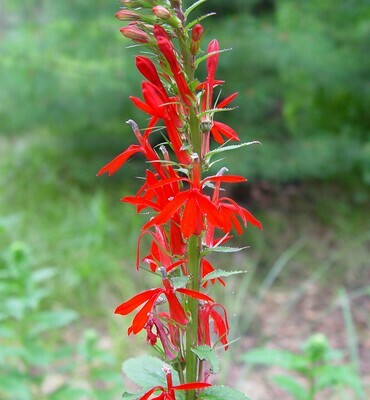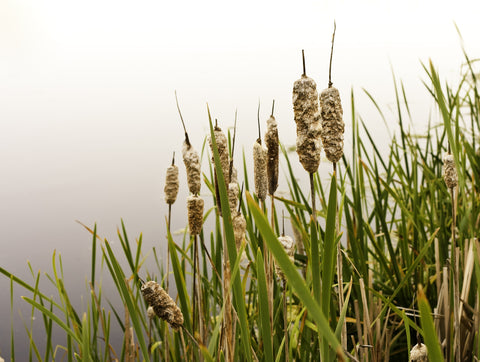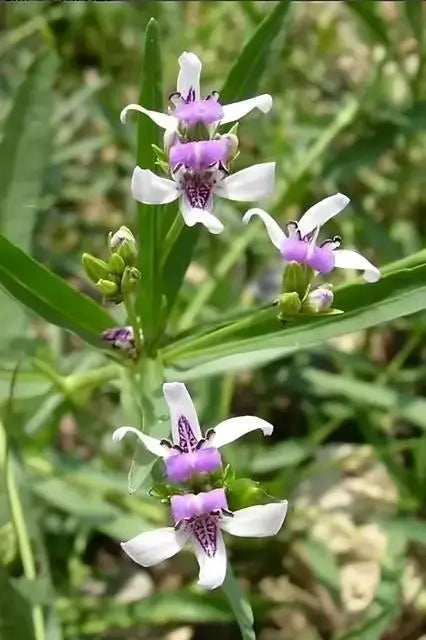Native wetland plants
Native wetland plants can be beautiful and essential to the wildlife and conservation of urban, suburban, or rural areas. Plants native to wetlands are found in regions of the world with waterlogged or saturated soil; every continent, except Antarctica, has native plants that grow in their wetland regions.
Wetland plants live and thrive in unique soil conditions known as hydric soils.
Soils classed as hydric are formed under saturated conditions that allow the growth of native plant species when flooded or covered by water for a significant period. In some cases, hydric soils and their indigenous plant species can survive when the soil is not waterlogged or saturated during dry seasons, reducing the water level at various times of the year.
By including plants native to a waterlogged landscape in a natural or artificially created aquatic landscape, so one can improve the aesthetic beauty of the garden; species of birds and other animals are often attracted to these plants for food and shade.
Native plants have many advantages
Other advantages of including native wetland plants in an aquatic landscape include flood prevention and water purification; once established, native plants should not require fertilizers or pesticides to stimulate or continue growth.
Exploring the Vital Role of Native Wetland Plants in Ecosystem Health
Wetlands are among our planet's most productive and diverse ecosystems, providing numerous ecological, economic, and social benefits. In this comprehensive exploration, we delve into the fascinating world of native wetland plants, examining their significance, characteristics, ecological functions, and challenges in the modern world.

The Significance of Native Wetland Plants
Native wetland plants shape their structure and function and are fundamental to wetland ecosystems. These plants have evolved to thrive in wetlands' unique hydrological and environmental conditions over millennia, exhibiting remarkable adaptations to saturated soils, fluctuating water levels, and other challenging situations. Their presence supports many life forms, from microorganisms and invertebrates to fish, birds, and mammals, creating complex food webs and sustaining biodiversity.
Furthermore, native wetland plants contribute significantly to ecosystem services. They play a crucial role in water filtration and purification, trapping sediments, nutrients, and pollutants, thus improving water quality.
Characteristics of Native Wetland Plants: Native wetland plants exhibit diverse morphological, physiological, and reproductive adaptations that enable them to thrive in wetland environments. These adaptations vary depending on factors such as water depth, duration of flooding, nutrient availability, and salinity levels. Some common characteristics of native wetland plants include:
Hydrophytic Adaptations: Native wetland plants possess hydrophytic adaptations that facilitate their survival in saturated soils. These adaptations may include specialized root systems, such as adventitious roots or pneumatophores, facilitating oxygen uptake in saturated soils. Additionally, many wetland plants have hollow or spongy tissues that aid in buoyancy and gas exchange.
Tolerance to Flooding: Many native wetland plants are adapted to tolerate periods of inundation, during which their roots and lower stems may be submerged. These plants often possess mechanisms for maintaining adequate oxygen supply to submerged tissues, such as aerenchyma tissues that facilitate oxygen transport from aerial parts to submerged roots.

Nutrient Acquisition: Native wetland plants have evolved various strategies for nutrient acquisition in nutrient-poor wetland soils. Some species exhibit mycorrhizal associations, forming symbiotic relationships with fungi to enhance nutrient uptake. In contrast, others have specialized root structures, such as root hairs or pneumatophores, that increase surface area for nutrient absorption.
Reproductive Strategies: Native wetland plants employ diverse reproductive. These strategies may include seed production, vegetative reproduction via rhizomes or stolons, or both. Some species have adapted to hydrochory, dispersing their seeds via water currents to colonize new areas within the wetland.
Ecological Functions of Native Wetland Plants: Native wetland plants perform many ecological functions vital for the health of wetland ecosystems. Some essential ecological functions include:
Habitat Provision: Native wetland plants provide essential habitat for aquatic and terrestrial species, serving as breeding grounds, nurseries, and foraging areas. The dense vegetation of wetlands offers shelter and protection for fish, amphibians, waterfowl, and numerous invertebrates, supporting diverse and abundant wildlife populations.
Water Quality Improvement From Native Wetland Plants

Native wetland plants are crucial in improving water quality by filtering pollutants, nutrients, and sediments from surface water. Through phytofiltration, adsorption, and microbial degradation, these plants help remove contaminants from water bodies, thereby enhancing water clarity and purity.
Soil Stabilization and Erosion Control: The deep root systems of native wetland plants help stabilize soils and prevent erosion, particularly along shorelines and in areas prone to flooding. By binding soil particles together and absorbing wave energy, these plants reduce the risk of shoreline erosion and protect adjacent upland habitats from sedimentation.
Carbon Sequestration: Native wetland plants contribute to carbon sequestration by capturing and storing carbon dioxide from the atmosphere through photosynthesis. The organic matter produced by wetland vegetation accumulates in the soil over time, forming peat and organic-rich sediments that act as long-term carbon sinks.
Challenges Facing Native Wetland Plants: Despite their ecological importance, native wetland plants face numerous threats and challenges in the modern world. Human activities such as habitat destruction, pollution, invasive species, climate change, and altered hydrological regimes pose significant risks. Some of the critical challenges facing native wetland plants include:
Habitat Loss and Degradation: Wetland habitats are among the most threatened ecosystems globally, with large areas being lost. The loss of wetland habitats deprives native plants of essential habitat and disrupts ecosystem processes, leading to biodiversity and ecosystem services declines.
Pollution and Contamination For Native Wetland Plants
Wetlands are vulnerable to pollution from various sources, including industrial discharge, agricultural runoff, urban stormwater, and wastewater effluent. Pollution can degrade water quality, poison native plants, and disrupt ecological processes, leading to habitat degradation and loss of biodiversity. Nutrient pollution, in particular, can promote the growth of algae and invasive plants, outcompeting native wetland species and altering ecosystem dynamics.
Climate Change: Native wetland plants by altering temperature regimes, precipitation patterns, sea levels, and hydrological cycles. These changes can disrupt the phenology, distribution, and abundance of wetland plants, leading to shifts in community composition and loss of habitat suitability for native species.
Conservation and Management Strategies: To address the challenges facing native wetland plants, concerted conservation and management efforts are needed at local, regional, and global scales. Some critical strategies for conserving and managing native wetland plants include:
Habitat Protection and Restoration: Protecting remaining wetland habitats and restoring degraded or lost wetlands are essential for preserving native wetland plants and restoring ecosystem functions. Conservation measures such as land acquisition, habitat restoration, and establishment of protected areas can help safeguard wetland biodiversity and enhance habitat connectivity for native species.
Invasive Species Management: Implementing invasive species management programs is critical for controlling the spread of invasive plants and restoring native plant communities. Control methods may include mechanical removal, chemical herbicide treatments, biological control using natural enemies of invasive species, and habitat modification to reduce invasibility.
Water Quality Protection For Native Wetland Plants
Protecting water quality is essential for the health of wetland ecosystems and the survival of native wetland plants. Sustainable land use planning, riparian buffers, vegetated swales, and constructed wetlands are among the measures to protect wetland ecosystems.
Climate Change Adaptation For Native Wetland Plants
Climate change adaptation strategies are essential for enhancing the resilience of native wetland plants to climate change impacts. This may include promoting habitat connectivity, facilitating species migration, restoring natural hydrological regimes, and improving habitat heterogeneity to provide refuge for species vulnerable to climate change. Conservation efforts should also focus on protecting resilient and genetically diverse populations of native wetland plants that are better able to withstand future environmental changes.
Native wetland plants are invaluable components of wetland ecosystems, playing essential roles in maintaining biodiversity, supporting ecosystem services, and providing numerous benefits to society. However, these plants face significant threats and challenges from human activities, invasive species, pollution, and climate change. Concerted conservation and management efforts are needed to protect and restore native wetland plants and safeguard the health and integrity of wetland ecosystems for future generations by recognizing the importance of native wetland plants.



















































